SNVSCV4 September 2024 LM3645
PRODUCTION DATA
- 1
- 1 Features
- 2 Applications
- 3 Description
- 4 Pin Configuration and Functions
- 5 Specifications
-
6 Detailed Description
- 6.1 Overview
- 6.2 Functional Block Diagram
- 6.3
Feature Description
- 6.3.1 Power Amplifier Synchronization (TORCH/TX)
- 6.3.2 Input Voltage Flash Monitor (IVFM)
- 6.3.3
Fault/Protections
- 6.3.3.1 Fault Operation
- 6.3.3.2 Flash Time-Out
- 6.3.3.3 Overvoltage Protection (OVP)
- 6.3.3.4 Current Limit
- 6.3.3.5 NTC Thermistor Input/Outputs (TEMP1, TEMP2)
- 6.3.3.6 Thermal Scale Back
- 6.3.3.7 Thermal Shutdown (TSD)
- 6.3.3.8 Undervoltage Lockout (UVLO)
- 6.3.3.9 LED and/or VOUT Short Fault
- 6.3.3.10 Fault Behavior Table
- 6.4 Device Functioning Modes
- 6.5 Programming and Control
- 6.6 Register Descriptions
- 7 Application and Implementation
- 8 Power Supply Recommendations
- 9 Layout
- 10Device and Documentation Support
- 11Revision History
- 12Mechanical, Packaging, and Orderable Information
5.8 Typical Characteristics
ICL = 5 A
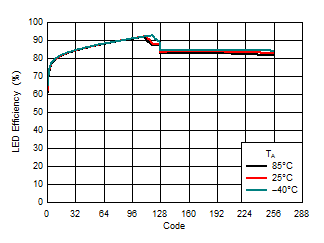
| VIN = 3.3 V | fSW = 4 MHz |
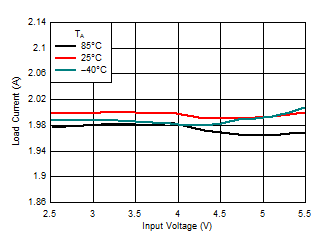
| ILOAD = 2 A | fSW = 4 MHz |
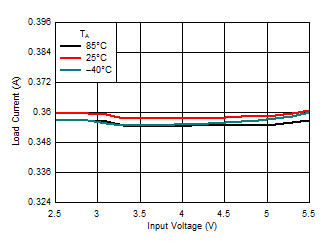
| ILOAD = 360 mA | fSW = 4 MHz |
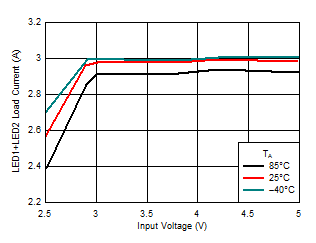
| ILOAD = 3 A | fSW = 2 MHz |
| two outputs tied |
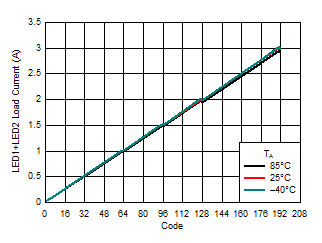
| VIN = 3.3 V | fSW = 2 MHz |
| two outputs tied |
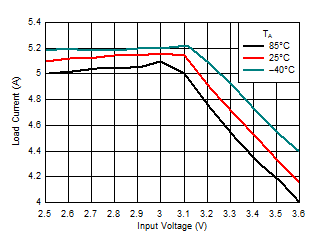
| two outputs tied | fSW = 2 MHz |
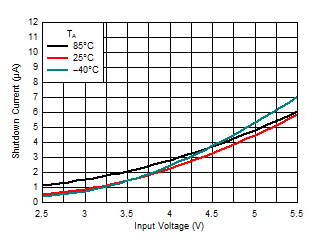
| VEN = VQC = 0 V |
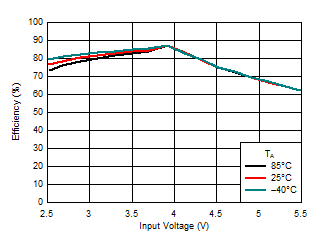
| ILOAD = 2 A | fSW = 4 MHz |

| VIN = 3.3 V | fSW = 4 MHz |
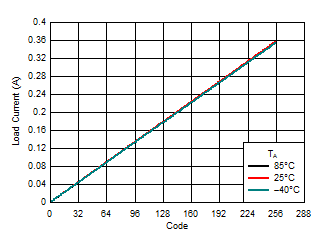
| VIN = 3.3 V | fSW = 4 MHz |
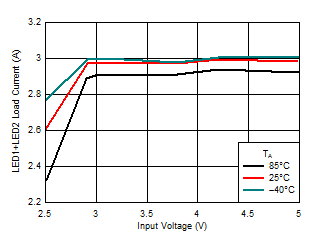
| ILOAD = 3 A | fSW = 4 MHz |
| two outputs tied |
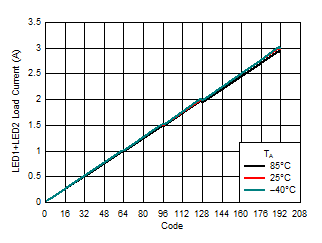
| VIN = 3.3 V | fSW = 4 MHz |
| two outputs tied |
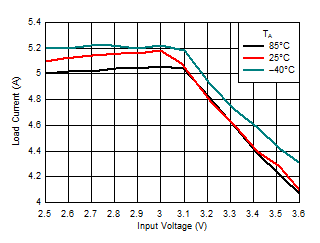
| two outputs tied | fSW = 4 MHz |
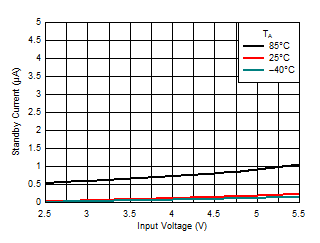
| VEN = VQC = 1.8 V |